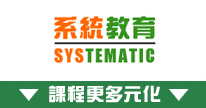DOMAIN 1: Governance
- Organizational Governance
- Organizational Strategy, Goals, and Objectives
- Organizational Structure, Roles, and Responsibilities
- Organizational Culture
- Policies and Standards
- Business Processes
- Organizational Assets
- Risk Governance
- Enterprise Risk Management and Risk Management Framework
- Three Lines of Defense
- Risk Profile
- Risk Appetite and Risk Tolerance
- Legal, Regulatory, and Contractual Requirements
- Professional Ethics of Risk Management
DOMAIN 2: IT Risk Assessment
- IT Risk Identification
- Risk Events (e.g., contributing conditions, loss result)
- Threat Modelling and Threat Landscape
- Vulnerability and Control Deficiency Analysis (e.g., root cause analysis)
- Risk Scenario Development
- IT Risk Analysis and Evaluation
- Risk Assessment Concepts, Standards, and Frameworks
- Risk Register
- Risk Analysis Methodologies
- Business Impact Analysis
- Inherent and Residual Risk
DOMAIN 3: Risk Response and Reporting
- Risk Response
- Risk Treatment / Risk Response Options
- Risk and Control Ownership
- Third-Party Risk Management
- Issue, Finding, and Exception Management
- Management of Emerging Risk
- Control Design and Implementation
- Control Types, Standards, and Frameworks
- Control Design, Selection, and Analysis
- Control Implementation
- Control Testing and Effectiveness Evaluation
- Risk Monitoring and Reporting
- Risk Treatment Plans
- Data Collection, Aggregation, Analysis, and Validation
- Risk and Control Monitoring Techniques
- Risk and Control Reporting Techniques (heatmap, scorecards, dashboards)
- Key Performance Indicators
- Key Risk Indicators (KRIs)
- Key Control Indicators (KCIs)
DOMAIN 4: Information Technology and Security
- Information Technology Principles
- Enterprise Architecture
- IT Operations Management (e.g., change management, IT assets, problems, incidents)
- Project Management
- Disaster Recovery Management (DRM)
- Data Lifecycle Management
- System Development Life Cycle (SDLC)
- Emerging Technologies
- Information Security Principles
- Information Security Concepts, Frameworks, and Standards
- Information Security Awareness Training
- Business Continuity Management
- Data Privacy and Data Protection Principles
The course content above may change at any time without notice in order to better reflect the content of the examination.
